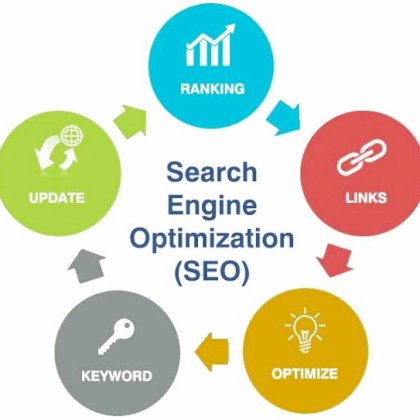Ad Settings on Google.com

ad setting google com When it comes to online advertising, Google Ad Settings plays a crucial role in controlling the type of ads that users see on their devices. Ad Settings is a powerful tool developed by Google that allows individuals to customize their ad experience based on their personal preferences. By enabling this feature, users gain the ability to manage their ad settings, such as blocking certain types of ads or seeing ads that are more relevant to their interests. This personalized approach aims to create a better user experience while also giving users more control over the ads they encounter. In this day and age, where online advertising is a significant part of our lives, Google Ad Settings is a valuable tool that empowers users to tailor their ad experience to their liking.
When it comes to managing your online advertising campaigns on Google.com, understanding the ad settings is crucial. In this article, we will delve into the various aspects of ad settings and how they can impact your advertising success.
Ad settings on Google.com refer to the customizable options that allow you to control where and how your ads appear on the search engine results page (SERP). By fine-tuning these settings, you can optimize your ad targeting, increase visibility, and ultimately drive more relevant traffic to your website.
One of the key factors to consider in ad settings is the location targeting. With Google's advanced geo-targeting capabilities, you can specify the geographic regions where you want your ads to be displayed. This ensures that your ads reach the right audience in the right locations, maximizing your chances of converting leads into customers.
Another important aspect of ad settings is language targeting. By selecting the languages in which your target audience is proficient, you can ensure that your ads are shown to users who can understand them effectively. This significantly improves the relevance and effectiveness of your advertising campaigns.
Furthermore, ad settings also allow you to choose the devices on which your ads will be displayed. With the widespread use of mobile devices, it is essential to optimize your ads for mobile viewing. By selecting mobile devices as your targeted platform, you can reach users who prefer browsing on their smartphones or tablets.
In addition to these settings, Google.com offers advanced options like ad scheduling, where you can choose specific times and days for your ads to be shown. This enables you to target your audience during peak periods or when they are most likely to engage with your ads.
When it comes to optimizing your ad performance, ad settings on Google.com play a pivotal role. By carefully choosing your targeting options, you can ensure that your ads are shown to the right audience, at the right time, and in the right locations. This precision targeting not only improves your click-through rates but also increases your chances of generating valuable leads and conversions.
In conclusion, understanding ad settings on Google.com is crucial for the success of your online advertising campaigns. By utilizing the various customizable options, such as location targeting, language targeting, and device targeting, you can optimize your ads and effectively reach your target audience. So, take the time to explore and leverage the power of ad settings to achieve your advertising goals on Google.com.
Understanding the Purpose of Ad Settings on Google.com
When it comes to online advertising, Google.com is undoubtedly one of the biggest platforms out there. With millions of users accessing it daily, businesses have the opportunity to reach a wide audience and promote their products or services effectively. However, to optimize the advertising experience, Google.com offers a feature called Ad Settings.
Ad Settings on Google.com serve a crucial purpose - to provide users with more control over the ads they see. By understanding and leveraging this feature, both advertisers and users can benefit greatly.
So, what exactly are Ad Settings? These settings allow users to personalize their ad experience and tailor it to their preferences. By accessing the Ad Settings section on Google.com, users can make changes to the types of ads they see, the topics they are interested in, and even opt out of personalized ads altogether.
One of the key benefits of Ad Settings is the ability to manage ad personalization. Personalized ads are created based on users' browsing history, interests, and demographics. While some users may appreciate seeing ads relevant to their interests, others may find them intrusive or irrelevant. With Ad Settings, users have the power to control the level of personalization they desire.
Another advantage of Ad Settings is the option to block specific advertisers or ad networks. If users come across an ad that they find annoying, offensive, or simply irrelevant, they can choose to block the advertiser or the entire network. This way, users can enjoy a more customized and pleasant browsing experience.
- How to Access Ad Settings on Google.com
Accessing Ad Settings on Google.com is simple and straightforward. Just follow these steps:
- Visit Google.com and sign in to your account.
- Click on your profile picture or initial at the top right corner of the screen.
- From the drop-down menu, select "Google Account."
- In the left-hand menu, click on "Data & personalization."
- Scroll down to the "Ad personalization" section and click on "Go to Ad settings."
- Here, you can make changes to your ad preferences according to your liking.
By following these steps, you can easily customize your ad experience and enjoy a more tailored browsing session without disruptive or irrelevant ads.
In conclusion, Ad Settings on Google.com play a vital role in providing users with control and personalization options for the ads they see. By understanding and utilizing these settings effectively, users can enhance their browsing experience while advertisers can reach a more engaged and receptive audience. Remember, by accessing the Ad Settings section on Google.com, you can take charge of your ad experience and make it truly your own.
How to Manage Ad Settings on Google.com Effectively
If you are looking to optimize your online advertising campaigns on Google.com, it is crucial to effectively manage your ad settings. By tweaking these settings, you can enhance the performance of your ads and maximize your return on investment. In this article, we will provide practical tips and strategies for managing your ad settings on Google.com effectively.
1. Understand Your Target Audience
Before diving into your ad settings, it is important to have a clear understanding of your target audience. By knowing who you are trying to reach, you can tailor your settings to appeal to the right people. Consider factors such as demographics, interests, and browsing behavior to craft targeted ads that resonate with your audience.
2. Choose the Right Ad Format
Google.com offers various ad formats, including text ads, display ads, and video ads. Each format serves a different purpose and caters to different types of businesses. Take the time to research and experiment with different formats to determine which one works best for your goals and target audience. Remember to optimize your ad format for mobile devices, as mobile usage continues to rise.
3. Optimize Ad Placement
The placement of your ads plays a crucial role in their visibility and success. Google.com offers different options for ad placement, such as search results, websites, and mobile apps. Consider the context in which your ads will appear and choose placements that align with your target audience's online behavior. Test different placements and regularly monitor their performance to make data-driven decisions.
4. Set a Budget and Bidding Strategy
Managing your ad settings also involves setting a budget for your campaigns and determining the right bidding strategy. Allocate your budget wisely, considering factors such as ad placement, competition, and the potential return on investment. Experiment with different bidding strategies, such as cost-per-click or cost-per-impression, to find the most effective approach for your goals.
| Setting | Description |
|---|---|
| Keyword Targeting | By choosing relevant keywords, you can ensure that your ads are shown to users searching for specific terms. |
| Ad Scheduling | Adjust the timing of your ads to reach your target audience at the most opportune moments. |
| Ad Extensions | Enhance your ads with additional information, such as location details or call buttons, to improve their performance. |
| Ad Rotation | Test different ad variations and optimize their rotation to find the most effective messaging for your audience. |
5. Monitor and Analyze Performance
Regularly monitoring and analyzing your ad performance is essential to optimizing your ad settings. Use Google Ads reporting tools to track key metrics, such as click-through rate, conversion rate, and cost per acquisition. Identify underperforming ads or settings and make adjustments accordingly to improve your campaigns' effectiveness over time.
In conclusion, managing your ad settings on Google.com effectively requires a strategic approach and continuous optimization. By understanding your target audience, choosing the right ad format, optimizing ad placement, setting a budget and bidding strategy, and monitoring performance, you can maximize the impact of your online advertising campaigns. Implement these tips and strategies to improve your ad settings and drive better results for your business.
The Benefits of Customizing Your Ad Settings on Google.com In today's digital age, online advertisements play a significant role in shaping our internet experience. As we navigate through countless websites and apps, ads tailored to our interests and preferences seem to follow us wherever we go. While this personalized approach has its merits, there are times when it becomes overwhelming or irrelevant. That's where Google.com's ad settings come into play, allowing users to customize and take control of their online ad experience. One of the key benefits of customizing your ad settings on Google.com is the ability to refine and optimize the content you encounter. By indicating your preferences, you can make sure that the ads you interact with align with your interests and needs. For instance, if you are an avid fitness enthusiast, you can choose to see ads related to fitness equipment, workout routines, or health supplements. This ensures that you receive relevant and valuable information, rather than being bombarded with ads that hold little to no interest for you. Personalizing your ad settings also empowers you to dictate the frequency and intensity of the ads you encounter. Sometimes, the sheer volume of advertisements can become overwhelming and disrupt your browsing experience. By adjusting your settings, you can choose to limit the number of ads you see or select specific categories that you want to see more or less of. This way, you can strike the perfect balance between relevant content and not feeling inundated by ads. Furthermore, customizing your ad settings can also have a positive impact on your privacy and data security. Google.com's ad settings allow you to manage and control the information advertisers can use to target you. By selecting what data is shared, you can minimize the risk of your personal information falling into the wrong hands. This level of control adds an extra layer of security and peace of mind when it comes to your online presence. In addition to the benefits to the individual user, businesses and advertisers can also gain advantages from customized ad settings. By tailoring their ads to a more receptive and engaged audience, companies can maximize the efficiency of their marketing efforts. This targeted approach ensures that their ads have a higher chance of resonating with the right individuals, leading to improved conversion rates and overall business success. In conclusion, customizing your ad settings on Google.com offers a multitude of benefits. By taking control of the ads you see, you can ensure a more personalized and relevant online experience. From refining content to managing privacy and data sharing, these settings empower users to optimize their browsing experience while still allowing businesses to effectively reach their target audience. So why settle for a generic online experience when you can tailor it to suit your interests and preferences? Take advantage of Google.com's ad settings and embrace the benefits of ad personalization today.
Common Concerns and FAQs about Ad Settings on Google.com
As the online advertising landscape continues to evolve, it's essential for users to understand and be able to manage their ad settings on Google.com. In this article, we will address some common concerns and answer frequently asked questions about ad settings, providing valuable insights and guidance for our readers.
One of the most frequently asked questions about ad settings on Google.com is how to control the ads you see. With Google's robust ad personalization features, users have the power to customize their ad experience. By accessing their ad settings, users can manage their interests and information used for ad personalization, ensuring that they receive relevant and tailored advertisements.
Another common concern relates to privacy and data usage. Many users worry about the amount of personal information collected by Google for ad targeting purposes. It's important to note that Google values user privacy and is committed to protecting personal data. The information collected is used to deliver personalized and relevant ads while maintaining user anonymity and data security.
Understanding how ad settings work can also be a challenge for some users. Google provides a transparent and user-friendly interface for managing ad settings. By visiting the "Ads Settings" page on Google.com, users can explore and make adjustments to their ad preferences. This allows users to have control over the types of ads they see and the information used for personalization.
It's worth noting that ad settings on Google.com are not static and can be updated at any time. Users should regularly review and adjust their ad settings to ensure they align with their preferences and interests. By doing so, users can further enhance their ad experience and receive ads that are truly valuable and relevant to them.
In conclusion, managing ad settings on Google.com is crucial for users who want to have control over their online advertising experience. By understanding how ad settings work and taking advantage of the available customization options, users can ensure that they receive ads that align with their interests while maintaining their privacy. So why wait? Start exploring and optimizing your ad settings on Google.com today!
| Common Concerns | FAQs |
|---|---|
| 1. How can I control the ads I see on Google.com? | (Click here) |
| 2. What information does Google collect for ad targeting? | (Click here) |
| 3. How can I update my ad settings? | (Click here) |
Frequently Asked Questions
To customize your ad settings on adsettings.google.com, follow these steps:
- Go to the ad settings website: adsettings.google.com
- Sign in to your Google account.
- On the left-hand side, you will see different ad categories such as 'Your topics', 'Your general interests', and 'Advertisers you can't see'. Click on any category to see the personalized ads associated with it.
- To customize a specific ad category, select the three dots icon next to it and choose 'Block', 'Turn off', or 'Edit' to change your preferences.
- To turn off personalized ads altogether, go to the 'Ad personalization' section on the ad settings website and toggle the switch to 'Off'.
The ads you see are based on different factors such as your interests, demographics, and other information Google collects about you. Google uses this data to show you relevant ads that are more likely to be of interest to you.
Yes, you can opt out of personalized ads. On the ad settings website, go to the 'Ad personalization' section and toggle the switch to 'Off'. Keep in mind that you may still see ads, but they will be less relevant to your interests.
To manage your ad preferences on adsettings.google.com, follow these steps:
- Go to the ad settings website: adsettings.google.com
- Sign in to your Google account.
- On the left-hand side, you will see different ad categories such as 'Your topics', 'Your general interests', and 'Advertisers you can't see'. Click on any category to see the personalized ads associated with it.
- To manage a specific ad category, select the three dots icon next to it and choose 'Block', 'Turn off', or 'Edit' to change your preferences.
If you turn off personalized ads, you may still see ads, but they will be less relevant to your interests. Instead, you may see more generic ads that are not tailored specifically to you.
Changes in ad preferences usually take effect immediately. However, it may take some time for the changes to be reflected across all devices and platforms.
Yes, you can block specific advertisers. On the ad settings website, go to the 'Advertisers you can't see' category and select the three dots icon next to an advertiser. Choose 'Block' to prevent that advertiser from showing personalized ads to you.
Google collects different types of information for personalized ads, including your search and browsing history, location, device information, and demographic data. This information is used to show you ads that are more relevant to your interests.
Yes, you can see and edit your ad preferences on mobile devices. Download the 'Google Ad Settings' app from the Google Play Store or App Store, sign in to your Google account, and follow the on-screen instructions to manage your ad preferences.
Yes, your ad preferences are synced across devices as long as you are signed in to your Google account. Any changes you make to your ad preferences will be reflected on all devices where you are signed in.
 English
English
 Turkish
Turkish 























